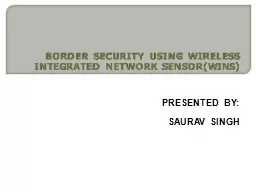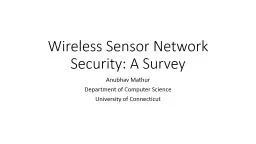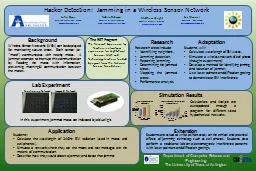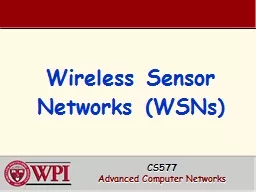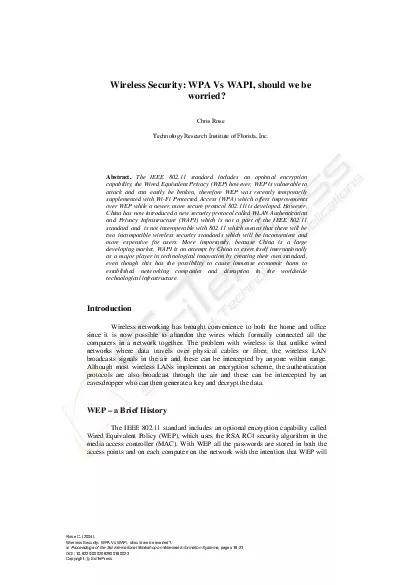PPT-BORDER SECURITY USING WIRELESS INTEGRATED NETWORK SENSOR(WINS)
Author : mitsue-stanley | Published Date : 2018-09-21
PRESENTED BY SAURAV SINGH OVERVIEW INTRODUCTION WINS SYSTEM ARCHITECTURE WINS NODE ARCHITECTURE WINS MICRO SENSORS DISTRIBUTED SENSOR AT BORDER WINS DIGITAL SIGNAL
Presentation Embed Code
Download Presentation
Download Presentation The PPT/PDF document "BORDER SECURITY USING WIRELESS INTEGR..." is the property of its rightful owner. Permission is granted to download and print the materials on this website for personal, non-commercial use only, and to display it on your personal computer provided you do not modify the materials and that you retain all copyright notices contained in the materials. By downloading content from our website, you accept the terms of this agreement.
BORDER SECURITY USING WIRELESS INTEGRATED NETWORK SENSOR(WINS): Transcript
Download Rules Of Document
"BORDER SECURITY USING WIRELESS INTEGRATED NETWORK SENSOR(WINS)"The content belongs to its owner. You may download and print it for personal use, without modification, and keep all copyright notices. By downloading, you agree to these terms.
Related Documents

